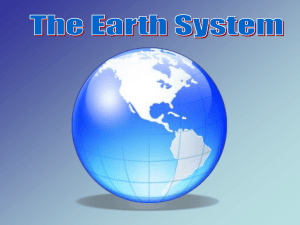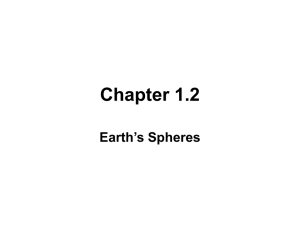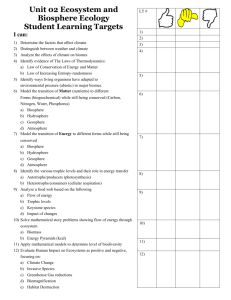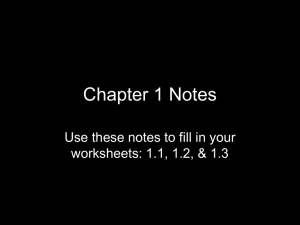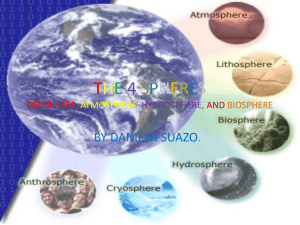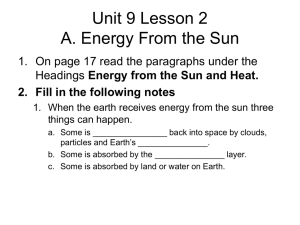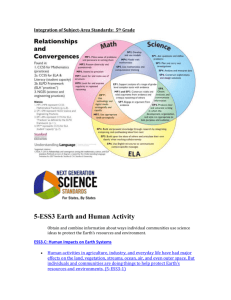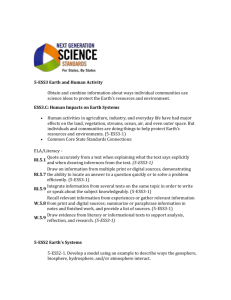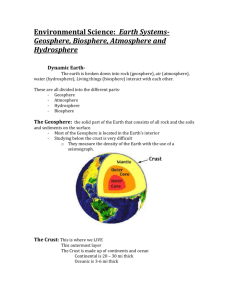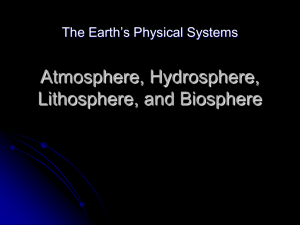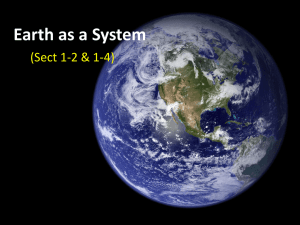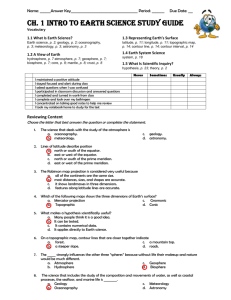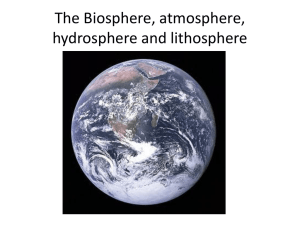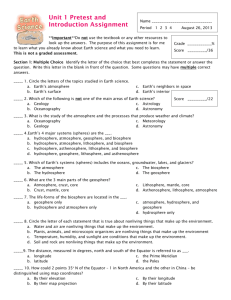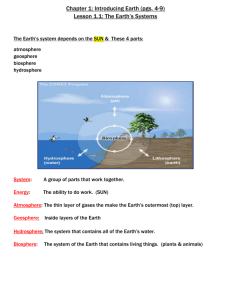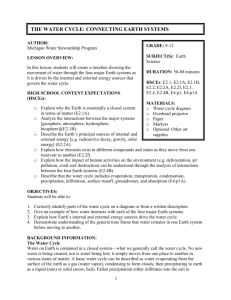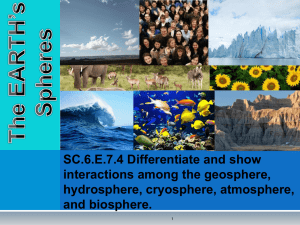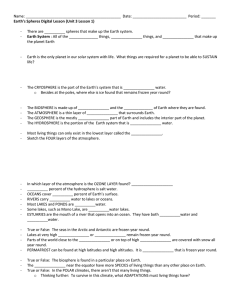Example Assessment Map
advertisement
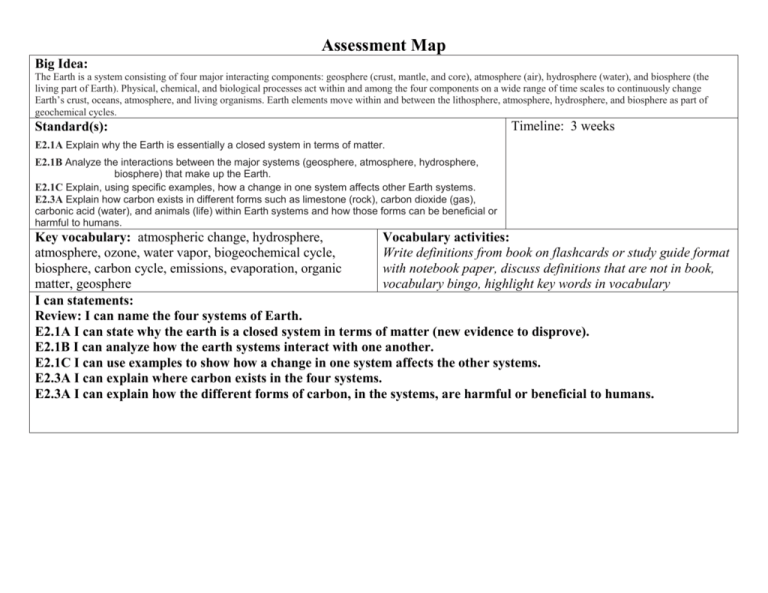
Assessment Map Big Idea: The Earth is a system consisting of four major interacting components: geosphere (crust, mantle, and core), atmosphere (air), hydrosphere (water), and biosphere (the living part of Earth). Physical, chemical, and biological processes act within and among the four components on a wide range of time scales to continuously change Earth’s crust, oceans, atmosphere, and living organisms. Earth elements move within and between the lithosphere, atmosphere, hydrosphere, and biosphere as part of geochemical cycles. Standard(s): Timeline: 3 weeks E2.1A Explain why the Earth is essentially a closed system in terms of matter. E2.1B Analyze the interactions between the major systems (geosphere, atmosphere, hydrosphere, biosphere) that make up the Earth. E2.1C Explain, using specific examples, how a change in one system affects other Earth systems. E2.3A Explain how carbon exists in different forms such as limestone (rock), carbon dioxide (gas), carbonic acid (water), and animals (life) within Earth systems and how those forms can be beneficial or harmful to humans. Key vocabulary: atmospheric change, hydrosphere, Vocabulary activities: atmosphere, ozone, water vapor, biogeochemical cycle, Write definitions from book on flashcards or study guide format biosphere, carbon cycle, emissions, evaporation, organic with notebook paper, discuss definitions that are not in book, matter, geosphere vocabulary bingo, highlight key words in vocabulary I can statements: Review: I can name the four systems of Earth. E2.1A I can state why the earth is a closed system in terms of matter (new evidence to disprove). E2.1B I can analyze how the earth systems interact with one another. E2.1C I can use examples to show how a change in one system affects the other systems. E2.3A I can explain where carbon exists in the four systems. E2.3A I can explain how the different forms of carbon, in the systems, are harmful or beneficial to humans. Knowledge Reasoning 1. State why Earth was once considered to be a closed system using energy and matter. 2. List 4 Earth systems Describe Assessment and Timeline Assessment 1: Out the door question Performance Skills 1. Recognize elements containing carbon as existing in the atmosphere, hydrosphere, biosphere, and/or the geosphere ( Ex: Co2 is in the atmosphere and the hydrosphere, carbon is in methane gas in the atmosphere 2. Analyze, in a given situation, how one system affects another. 3. Predict what will happen to other systems when one system is changed in a specific way. Method Product 1. Recreate carbon in carbon cycle with balloon activity. 2. Explain how carbon is harmful or beneficial to humans. Type of Reasoning Analysis and Intervention reasoning Predict what might happen. Reteach with another example reasoning Label substances in systems discussion Student Response Another out the door Assessment 2: Matching Fix the matching Assessment 3: Diagram carbon cycle reasoning Diagram and label systems View and re-teach individuals Gallery walk to look at each other’s work Represent carbon cycle physically Assessment 5: skill Recreate carbon cycle Guide them as they do it. redo T chart skill Evaluation Discuss with individuals They fix it. Assessment 4:
